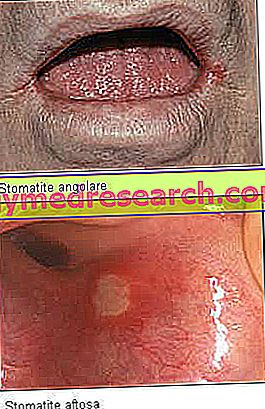Related articles: Psoriatic arthritis
Definition
Psoriatic arthritis is a chronic disease characterized by joint inflammation that occurs in people with psoriasis.
The exact etiology and pathophysiology are still unknown, however some factors that may predispose to the disorder have been identified. In particular, the risk of developing this form of arthritis is greater if the subject is familiar with the disease (so if it is genetically predisposed), if the psoriasis is extensive and also localized to the nails or if the HLA-B27 antigen is present ( or other specific alleles).
Men and women are equally affected, although women are more likely to develop psoriatic arthritis, especially after pregnancy or menopause.
Psoriatic arthritis is classified as a seronegative spondyloarthritis and may present with a vast heterogeneity of manifestations. Onset is generally subtle and the course varies between persistent and episodic forms (in which phases of active disease can alternate with periods of remission).
In most cases, the onset of skin disease precedes psoriatic arthritis; less frequently, on the other hand, joint involvement occurs before or simultaneously with psoriasis.
Most common symptoms and signs *
- Asthenia
- Conjunctivitis
- dactylitis
- Coccyx pain
- Neck pain
- Knee pain
- Foot pain
- Pelvic pain
- Pain, heat, redness and swelling of the finger
- Articolar pains
- Muscle pains
- Edema
- Erythema
- Joint swelling
- leukonychia
- Backache
- onycholysis
- Dry skin
- plaques
- Rheumatism
- Joint stiffness
- Stiffness in the muscles of the back and neck
- Articular noises
- Scales on the skin
- Coarse and opaque nails
- Articular Pouring
Further indications
Psoriatic arthritis can affect any joint in the body, with a characteristic asymmetry. It typically occurs with pain, swelling and stiffness (especially in the morning) of the joints, sometimes associated with heat and joint redness. Rheumatoid nodules are absent.
The distal interphalangeal joints of the hands and feet are affected with particular frequency. In these sites, a deformation typical of psoriatic arthritis is the "sausage finger" (dactilitis), a condition that causes swelling, pain and redness of one or more fingers and / or toes, due to the inflammatory involvement of the periarticular structures .
In some cases, it is possible to observe forms with mutilations (mutilating arthritis, with osteolysis of small joints of the hand or foot) and evolved grade deformities (telescope fingers).
Other joints are often involved asymmetrically in the inflammatory process, especially the vertebral and sacroiliac ones. This results in pain in the back, reduction of movements and formation of syndesmophytes (small "bridges" or bone spurs between the vertebrae) asymmetric of the column.
In subjects with psoriatic arthritis, enthesitis (multiple or isolated), involvement of the Achilles tendon, plantar fasciitis and inflammation of the pelvic muscle-tendon insertions are frequent.
In some subjects, there may also be ocular involvement (mainly in the form of conjunctivitis), as happens in other spondyloarthritis.
Early identification, diagnosis and treatment of psoriatic arthritis are essential for controlling inflammation and limiting joint damage. Remissions from the disease tend to be more frequent, rapid and complete than those of rheumatoid arthritis, but progression to chronic and strongly debilitating joint inflammation can occur.
The diagnosis is formulated mainly on a clinical basis and by exclusion; the rheumatologist can precisely define the clinical picture using medical history, physical examinations, blood tests and imaging techniques (magnetic resonance and radiographs).
The treatment of psoriatic arthritis is directed to the control of skin lesions and joint inflammation. Usually, drug therapy is similar to that of rheumatoid arthritis, so it may include non-steroidal anti-inflammatory drugs, methotrexate, cyclosporine and TNF antagonists (infliximab and etanercept).
PUVA treatment (phototherapy with psoralen and ultraviolet A) can be useful for peripheral arthritis and skin psoriatic lesions.



